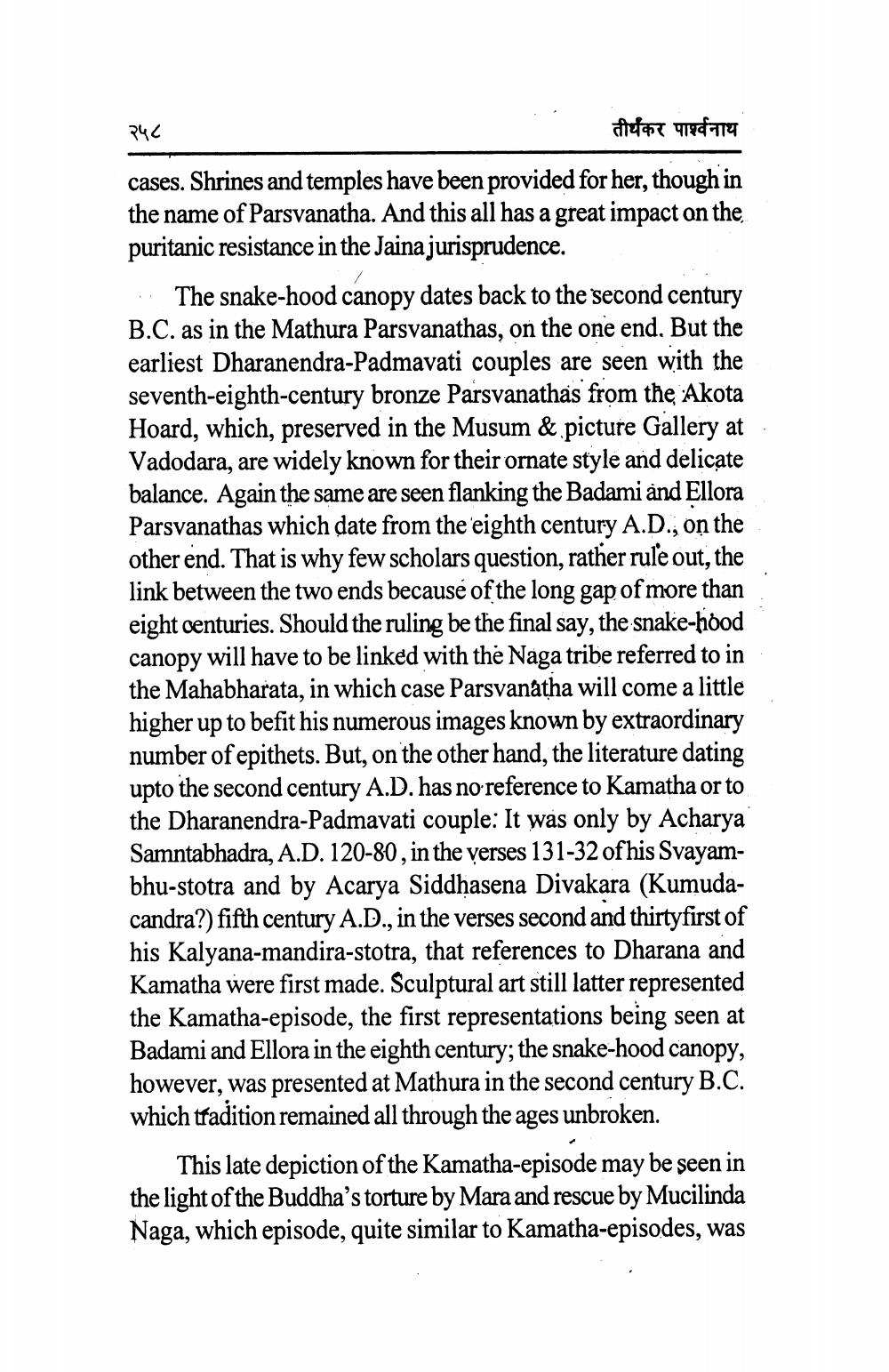________________
२५८
तीर्थकर पार्श्वनाथ
cases. Shrines and temples have been provided for her, though in the name of Parsvanatha. And this all has a great impact on the puritanic resistance in the Jaina jurisprudence.
The snake-hood canopy dates back to the second century B.C. as in the Mathura Parsvanathas, on the one end. But the earliest Dharanendra-Padmavati couples are seen with the seventh-eighth-century bronze Parsvanathas from tħe Akota Hoard, which, preserved in the Musum & picture Gallery at Vadodara, are widely known for their ornate style and delicate balance. Again the same are seen flanking the Badami and Ellora Parsvanathas which date from the eighth century A.D., on the other end. That is why few scholars question, rather rule out, the link between the two ends because of the long gap of more than eight centuries. Should the ruling be the final say, the snake-hood canopy will have to be linked with the Naga tribe referred to in the Mahabharata, in which case Parsvanatha will come a little higher up to befit his numerous images known by extraordinary number of epithets. But, on the other hand, the literature dating upto the second century A.D. has no-reference to Kamatha or to the Dharanendra-Padmavati couple: It was only by Acharya Samntabhadra, A.D. 120-80, in the verses 131-32 of his Svayambhu-stotra and by Acarya Siddhasena Divakara (Kumudacandra?)fifth century A.D., in the verses second and thirtyfirst of his Kalyana-mandira-stotra, that references to Dharana and Kamatha were first made. Sculptural art still latter represented the Kamatha-episode, the first representations being seen at Badami and Ellora in the eighth century; the snake-hood canopy, however, was presented at Mathura in the second century B.C. which tradition remained all through the ages unbroken.
This late depiction of the Kamatha-episode may be seen in the light of the Buddha's torture by Mara and rescue by Mucilinda Naga, which episode, quite similar to Kamatha-episodes, was




